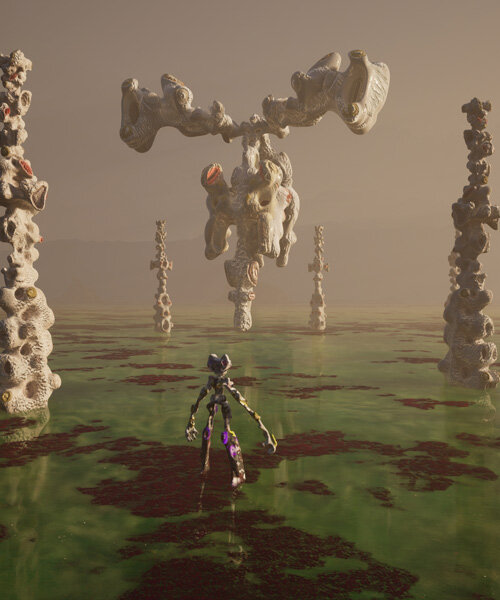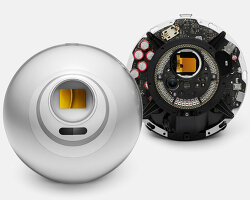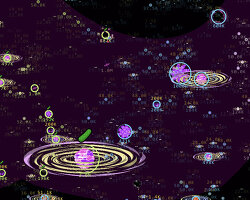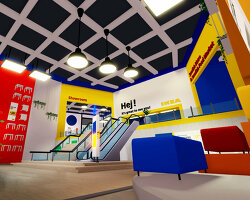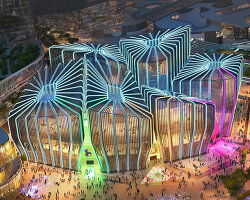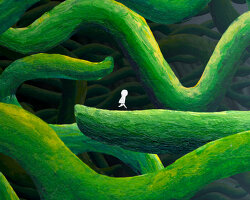ARTS TECHNOLOGIES PROGRAM AT SERPENTINE
The Serpentine Arts Technologies program challenges and reshapes the role advanced technologies can play in culture and society through artistic interventions and collaborations. Part of Serpentine’s commitment to supporting new artistic experiments, the program initiates and supports artists in developing ambitious works that deploy such technologies as a medium, tool or topic, often operating beyond gallery walls. One of the program’s initiatives is Artist Worlds, an experimental commission series that utilizes virtual world building to provide insight into an artist’s practice and expanded worldview. For 2023, Serpentine is collaborating with Brazilian artist Gabriel Massan on a multilevel downloadable game and a complementary blockchain-based project built on the energy-efficient blockchain Tezos. Titled ‘Third World: The Bottom Dimension’, the consciousness-raising game ‘arose from frustrations over the centralisation of power, knowledge and resources in contemporary Brazil, with inequality, difficulties of access and navigation especially concentrated for Black and Indigenous peoples,’ Eva Jäger, curator of Arts Technologies and co-investigator of the Creative AI Lab at Serpentine and King’s College London, tells designboom.
On November 25, 2022, Serpentine Arts Technologies will also release the third edition of Future Art Ecosystems (FAE), the annual strategic briefing by and for the cultural sector. Launched in 2020, the initiative provides concepts, references, language, and arguments that can be integrated into operational agendas for the construction of 21st century cultural infrastructure. The third edition, titled ‘Building Hybrid Worlds’, focuses on emerging Web3 technologies and their implications for practitioners, organisations, funders, and policy makers. ‘Through a series of interviews with specialists across art, Web3, crypto, DWeb, innovation policy and civic, FAE3 formulates a series of prospective strategies for existing and new cultural organisations interested in art and advanced technologies (AxAT) and the latter’s role in supporting resilient democratic societies,’ Jäger explains. To find out more about Future Art Ecosystems, Artist Worlds and the Serpentine Arts Technologies program, read our interview in full below.
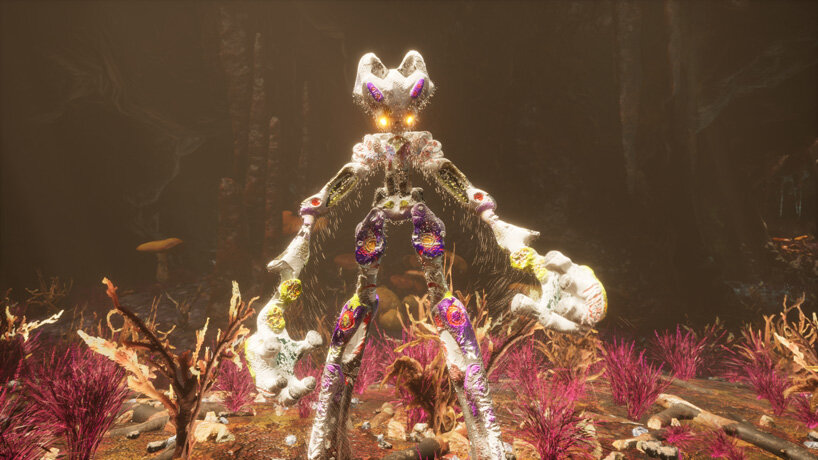
Artist Worlds 2023: Third World: The Bottom Dimension, image courtesy of Gabriel Massan, 2022
INTERVIEW WITH Eva Jäger and Tamar Clarke-Brown ON Artist Worlds
designboom (DB): What is the purpose of the Artist Worlds commissions?
Eva Jäger (EJ) and Tamar Clarke-Brown (TCB): Artist Worlds is an ongoing series of commissions and live events that support artistic practices that engage with simulated realities, immersive story-telling and virtual world-building. The projects invite audiences into new artist built virtual worlds to explore and discover their practices, processes and ideas. Since 2013 through our commissioning programme we’ve been working with artists (including Ian Cheng, Danielle Brathwaite-Shirley, Trust and Jakob Kudsk Steensen) who use CGI and simulation technologies like game engines to develop expansive, interactive and sophisticated projects and we’ve seen this adoption and experimentation grow during this time, particularly in the wake of the pandemic and the rise in the player-base of video games across different demographics of society. Artist Worlds is a commitment to supporting artistic experimentation in this field while it also supports open collaboration with our audiences and we hope to eventually get to the point of co-creation.
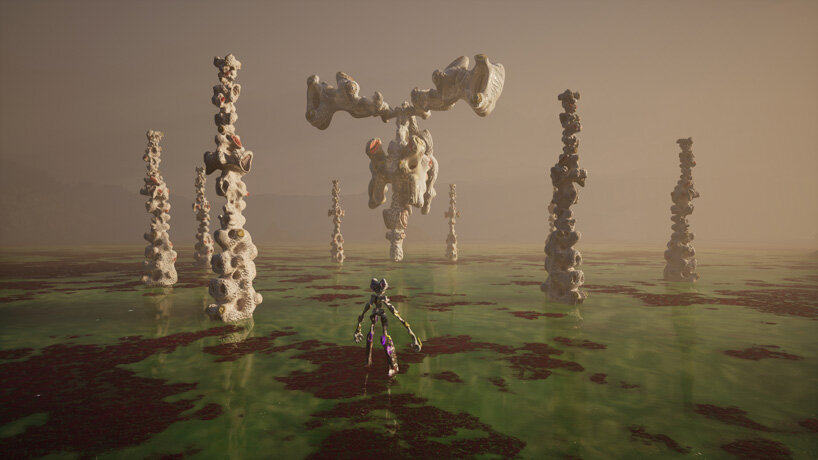
Gabriel Massan’s consciousness-raising game ‘Third World’
DB: How did the collaboration with Brazilian artist Gabriel Massan begin?
EJ & TCB: Gabriel was asking lots of the same questions we were in terms of the possibilities of decentralisation and interdependence. As a multidisciplinary digital artist, they view their practice as a process of creating decentralised lifeforms and ecosystems designed to subvert the spatial, social and socioeconomic stratifications of colonialism and its reverberations. We had lots of studio visits during the commissioning process, but ultimately it was clear it should be Gabriel. Their Artist Worlds commission, a video game called Third World, arose from frustrations over the centralisation of power, knowledge and resources in contemporary Brazil, with inequality, difficulties of access and navigation especially concentrated for Black and Indigenous peoples. The collaboration began with an R&D period to develop the game proposal, allowing for research into game design, critical theory such as Saidiya Hartmaan’s practice of ‘Critical Fabulation’ and advisory sessions with practitioners like narrative designer Meghna Jayanth, all the while refining the project’s core questions and intent. Leveraged by Tezos, Third World’s Web3 strategy will expand the game’s reach into online player communities by building an active and ongoing archive of gameplay.
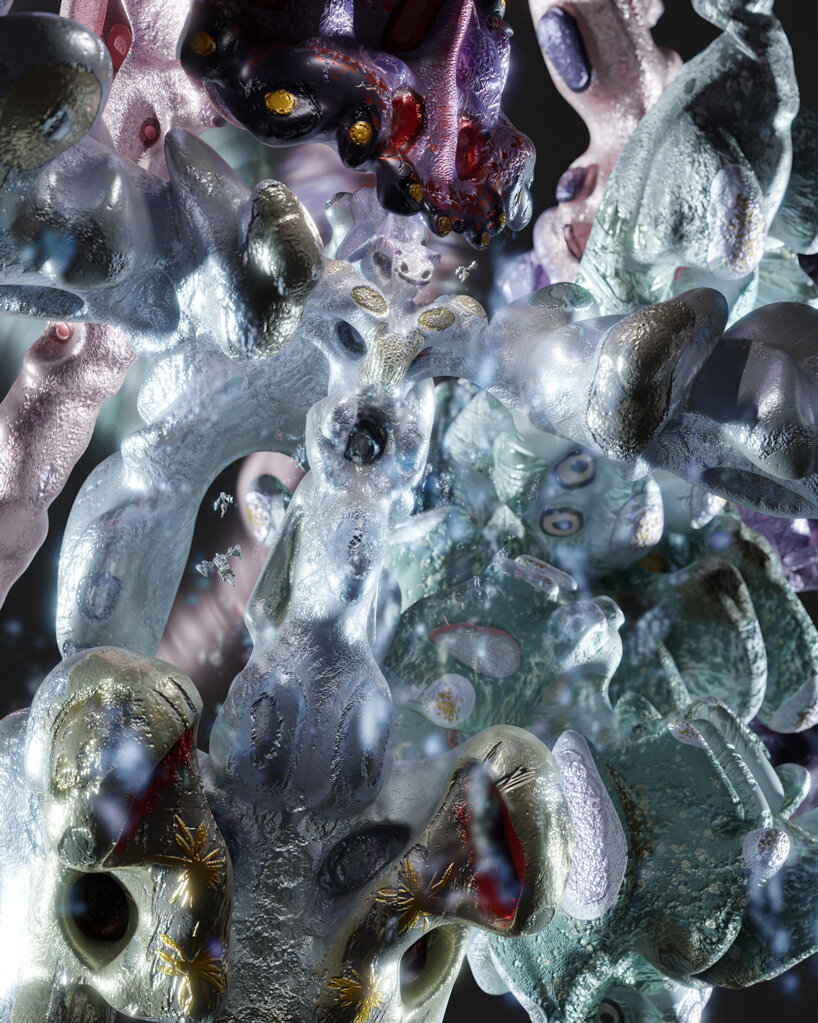
‘Third World’ visual, courtesy of Gabriel Massan
DB: Massan describes ‘Third World’ as a ‘consciousness-raising game’ — could you explain what the game is about and how it focuses on increasing players’ awareness?
EJ & TCB: As a player in Third World you must navigate through a disorienting environment; where night turns to day in the blink of an eye and there’s no map to be found. As you explore the world, you find collectible knowledge-artefacts that populate your memory over the course of play. As these artefacts are collected, they unlock parts of the game’s evolving narrative and discourse, which unfolds through in-game films. The artefacts themselves have been designed together with some of the games featured artists and carry insight and knowledge from their own practices relating to principles and issues of transmutation, healing (cura), interspecific spirituality and ancestry (Castiel Vitorino Brasileiro), pollution, resource extraction and environmental mismanagement (Novissimo Edgar).
From the beginning, Gabriel wanted to find a way to reveal and share stories about lived experience without reproducing the same images or delimiting systems through the process. This desire led not only to a decentralised and more abstract approach to representation, but also to an enquiry into how games themselves could shift power relations, resurfacing knowledge and possibilities made distant through colonial design and intent and how they could generate real world value for players.
One of the game’s key features is an in-built photo/video capture mode that activates bespoke distortion filters as the player navigates through the environment, and that connects to the game’s accompanying Web3 strategy. It prompts the player to save gameplay moments as minted memories; seen as personal tokens of understanding and intention made possible by moving through the game. The project plays with the role of memory, embracing the creation and retainment of experience as a form of empowerment to aid navigation; integral to how the player learns an awareness of the wider world that supports (rather than destroys) development, growth and evolution.
Gabriel Massan’s ‘Third World: The Bottom Dimension’ will launch in February 2023 online via Steam and onsite at Serpentine and amplify Serpentine’s commitment to gaming projects.
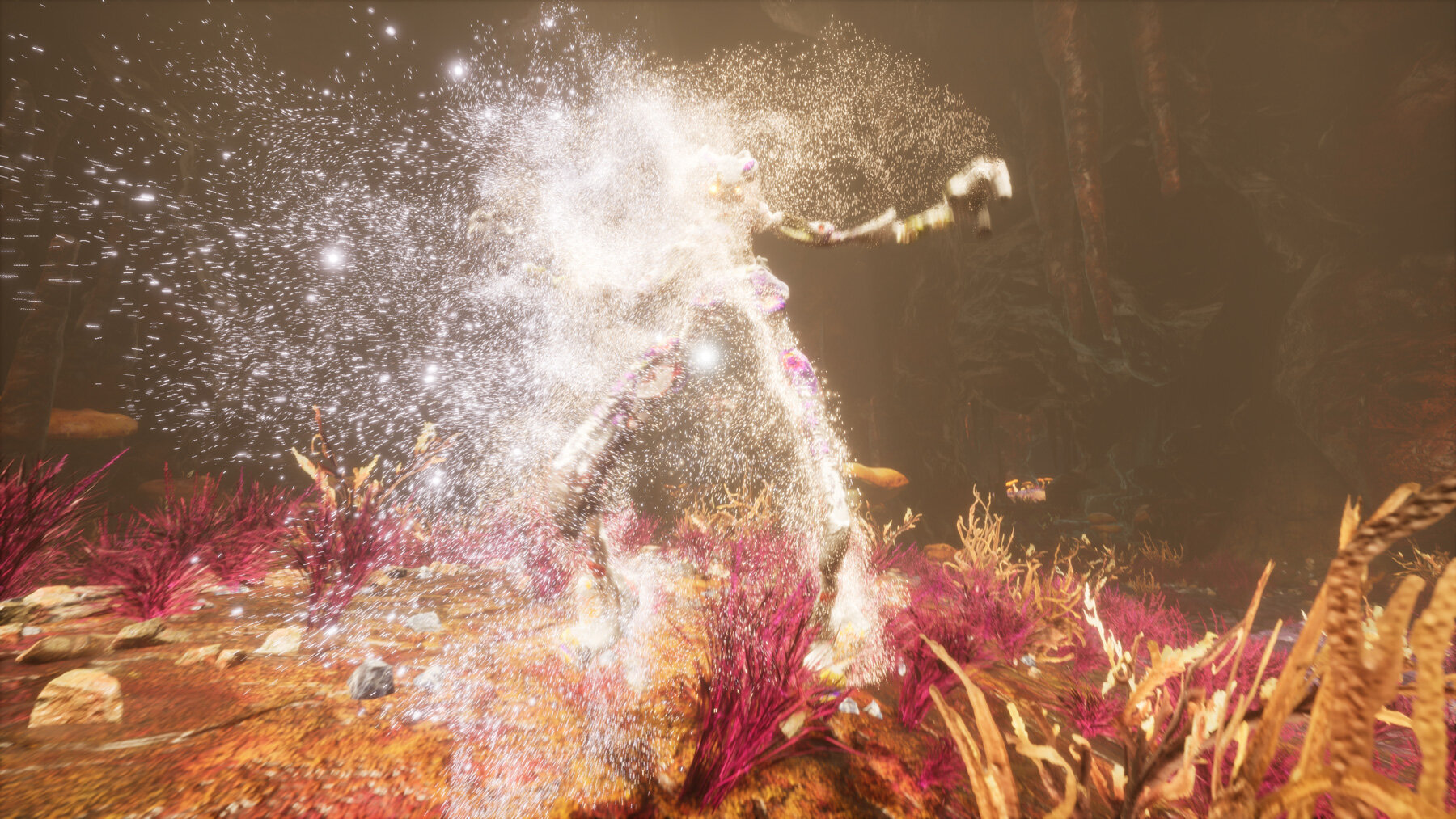
the game’s concept arose from frustrations over the centralisation of power, knowledge and resources in contemporary brazil
Eva Jäger ON Future Art Ecosystems 3: Building Hybrid Worlds
DB: What are some of the key points addressed in ‘Future Art Ecosystems 3: Building Hybrid Worlds’?
EJ: Future Art Ecosystems 3: Building Hybrid Worlds (FAE3) identifies new patterns for organisational and creative innovation within the broader space of decentralised technologies, variably dubbed as ‘web3’, ‘crypto’ and ‘DWeb’. Through a series of interviews with specialists across art, Web3, crypto, DWeb, innovation policy and civic, FAE3 formulates a series of prospective strategies for existing and new cultural organisations interested in art and advanced technologies (AxAT) and the latter’s role in supporting resilient democratic societies. Born out of a need to inform ecosystem design for AxAT, FAE is an evolving resource for crystallising the dynamics and opportunities within emerging technology spaces for building 21st century public cultural infrastructure: systems required to produce, distribute and financially support AxAT practices that are responsive to the most urgent techno-social issues of our time.
Some of the key questions that FAE3 addresses include:
• Beyond the NFT hype, what is the significance of such decentralised technologies as distributed ledgers, smart contracts and Decentralised Autonomous Organisations (organisations built on blockchain) for the cultural sector?
• How does understanding the potential of decentralised technologies allow us to approach the cultural sector as a mutable and experimental space?
• How can better interconnections across existing and new organisations in culture, research, civic activism and industry become a testing ground the next generation of democratic systems?
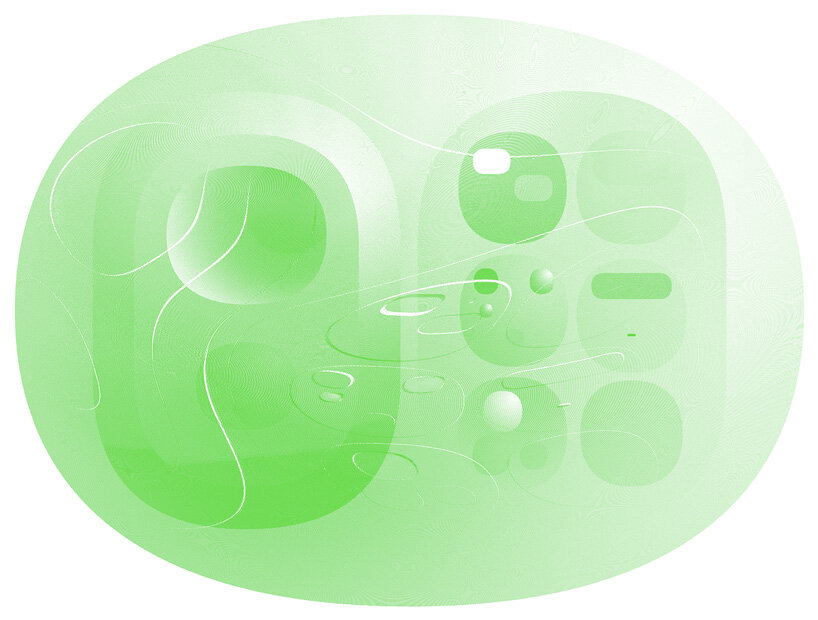
Future Art Ecosystems 3: Building Hybrid Worlds, Harm van den Dorpel Chapter 1
DB: What are some of the ways Web3 technologies are, or will be, influencing the construction and operation of cultural organisations?
EJ: While NFTs have empowered artists to make use of the recent boom in digital asset economy, the long-term implications of the web3 ecosystem for art and advanced technologies practitioners includes new business models and ways of interacting with audiences;
Building new coordination and operational tools is at the heart of the decentralised technologies’ approach to innovation – the cultural sector has much to learn from this approach;
Web3 view of ‘public value’ is constrained by overidentification with financial means of participation and, more generally, a lack of contextual grounding beyond the immediate communities who gather around minoritarian interests;
Against the backdrop of increasing societal and geopolitical fragmentation, decentralised technologies signal the potential of building bridges across and through institutional contexts in order to renegotiate how cultural production is organised, financed and distributed as a public good.
The learnings will inform the future of the art and advanced technologies (AxAT) ecosystem and its implications for artists, audiences and institutions, and society.
On November 25, 2022, Serpentine’s Arts Technologies will release the third Future Art Ecosystem (FAE) briefing streamed publicly via Serpentine’s Twitch platform (@SerpentineUK).
DB: What are some of the different activities the Serpentine Arts Technologies program undertakes? What are its dedicated research labs focused on? How do you see the program evolving in the future?
EJ: The Arts Technologies programme proposes critical and interdisciplinary perspectives on advanced technologies through artistic interventions and, since 2013, our team has been developing strategies for an artist-led programme that creates space to challenge and reshape the role that technologies can play in culture and society. We do this through a commissioning programme that focuses on embedded production to collaboratively build software and develop exhibitions and other projects, often operating beyond the gallery walls. This takes place alongside our R&D Platform, an evolving programme that supports the development of infrastructures for ongoing artistic exploration and interrogation of advanced and emerging technologies and a space of advocacy for Creative R&D.
The R&D Platform is where the institution’s ‘back-end’ (operations, protocols, in-built values) and ‘front-end’ (what it produces) are brought into experimental realignments through high-risk endeavours, knowledge sharing, convening, research and experimentation structured around a number of R&D Labs and Future Art Ecosystems, our annual strategic briefing. Our labs focus on areas of strategic importance including synthetic ecologies led by Yasaman Sheri, legal collaborations in art, tech and science led by Alana Kushnir of Guest Work Agency, blockchain and specifically DAOs led by Ruth Catlow and Penny Rafferty and creative AI led by Eva Jäger and Dr Mercedes Bunz which operates with partner King’s College London’s Digital Humanities Department.
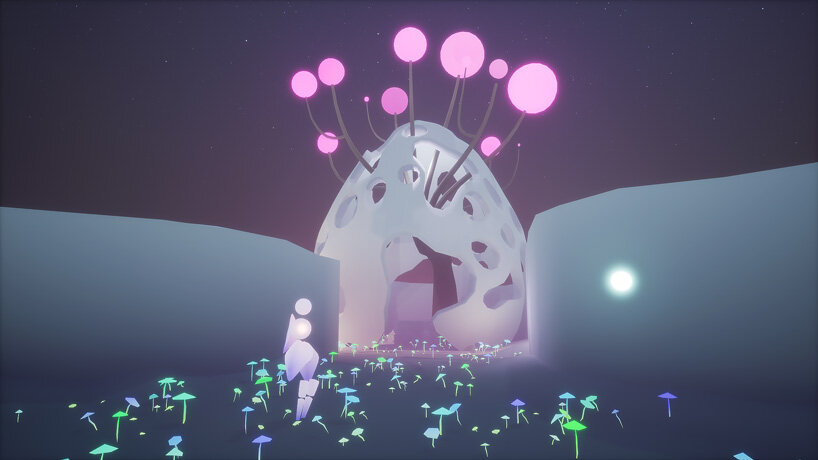
in 2021, Eva Jäger developed the R&D Labyrinths series together with Trust to produce new formats for showcasing artistic research | Hivemind, 2022, courtesy of Trust (0)
(Eva Jäger continued): Looking to the future, we will continue to develop ways to support artists working with advanced technologies in addition to the broader ecosystem and the way we commission and produce will continue to be informed by our research and strategy work, and vice versa. FAE3 will also inform the next chapter of the R&D Platform through a process of cross-organisational prototyping of new tools and infrastructures, functioning as a shared tool to align the objectives and strategies of organisations, funders and policy actors as we move into our next phase.
Our team commissions artists working with advanced technologies and produces the work alongside their teams, designing novel approaches and philosophies of new tech. The foundation of the Arts Technologies programme is located in an evolving R&D Platform that supports the development of infrastructures for ongoing artistic exploration and interrogation of advanced and emerging technologies through strategic briefings (called Future Art Ecosystems) and a number of labs.
We have a number of labs that have catalyzed around areas of strategic importance when it comes to artists working with advanced tech, namely the law, decentralised tech, life sciences and machine intelligence.
Eva Jäger is Curator of Arts Technologies and Co-Investigator of the Creative AI Lab at Serpentine and King’s College London. In 2021 she developed the R&D Labyrinths series together with Trust to produce new formats for showcasing artistic research.
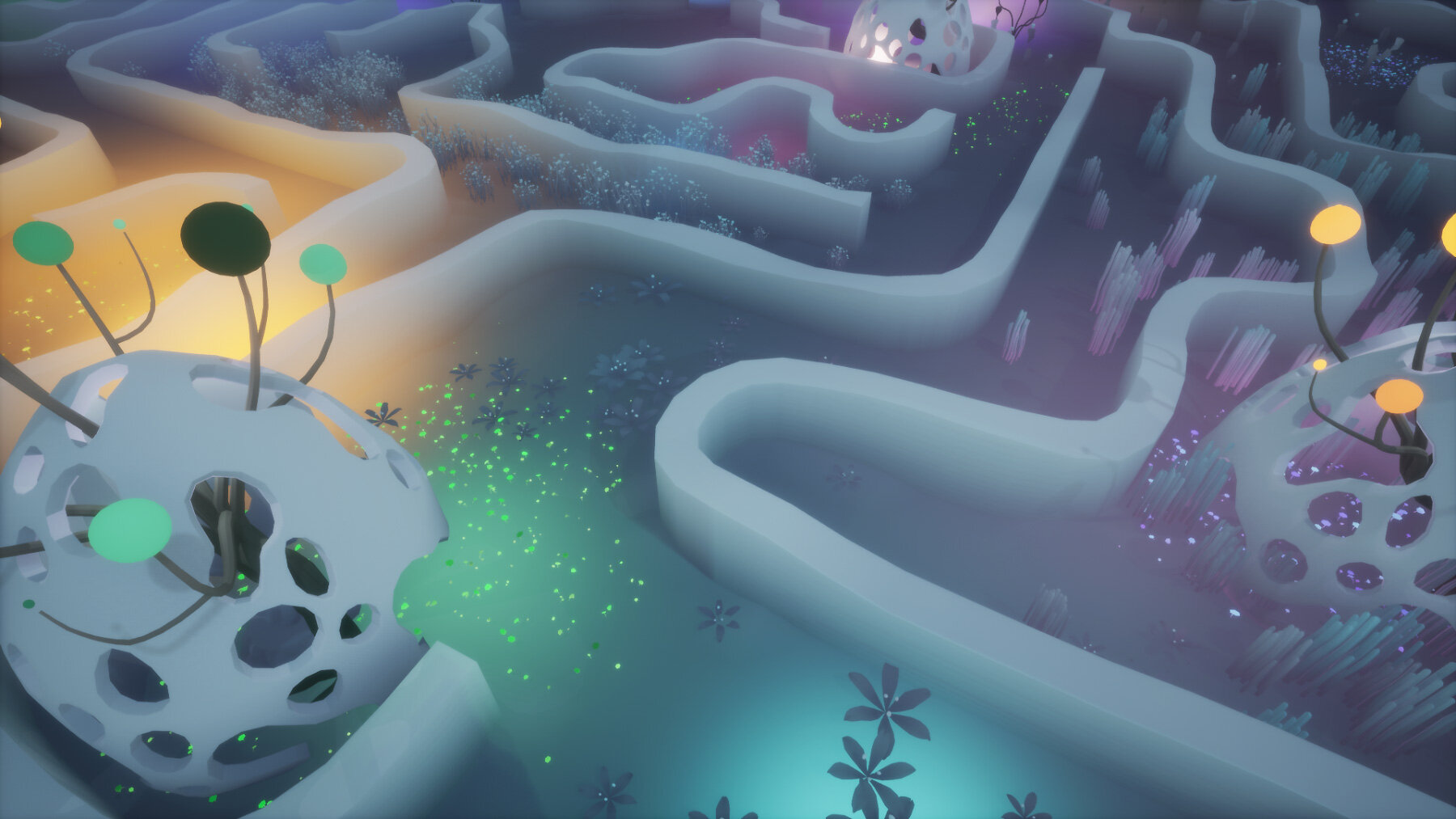
what began as R&D Labyrinths became Hivemind, an interactive, customisable knowledge game for artists to navigate the inner workings of their practice
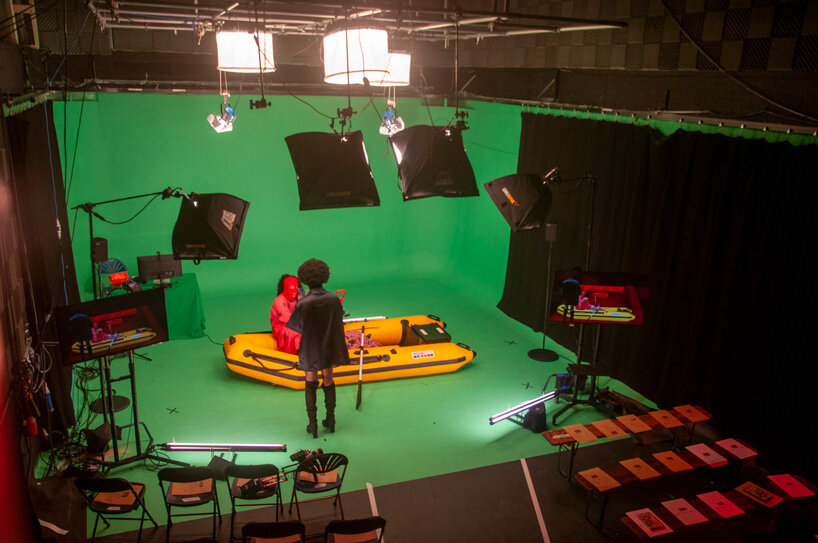
WE CAN’T DO THIS ALONE documentary film was presented by artist and game designer Danielle Brathwaite-Shirley & Serpentine Arts Technologies
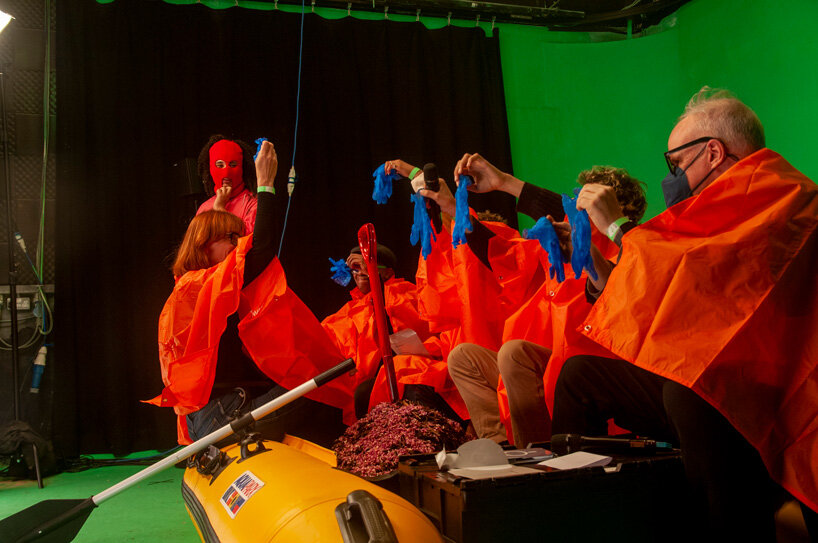
the film follows Danielle Brathwaite-Shirley across a six-month R&D journey
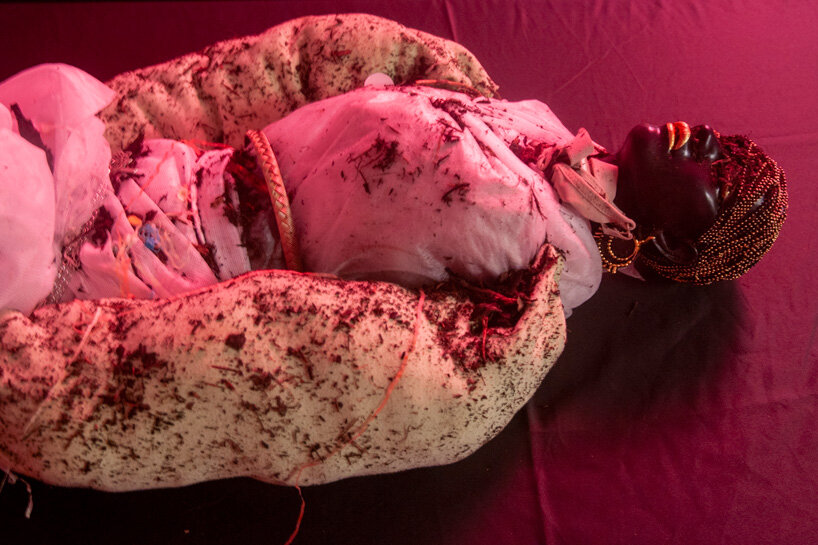
the project focused on supporting the artist’s ongoing mission to explore the untapped civic and activist potential of gaming in archiving and supporting Black Trans lives
project info:
program: Serpentine Arts Technologies
Serpentine Arts Technologies – team
Alexander Boyes is an integrated Producer within Serpentine Arts Technologies. Alex augments with creators and researchers across art, gaming, science and performance to best achieve their outputs and processes that have previously included Art Gallery of NSW Sydney, Design Museum London,The Francis Crick Institute, and Royal Opera House.
Tamar Clarke-Brown is Curator (Commissions) Arts Technologies, working across artist-led projects that push the civic capacity of technologies, with emphasis on the power of myth and storytelling.
Róisín McVeigh is Associate Producer within Serpentine Arts Technologies team and Comms and Content Lead at Protein Community. In her work as a producer and communications strategist, she collaborates to build games, worlds, experiences and communities.
Victoria Ivanova is R&D Strategic Lead within the Arts Technologies team. As a curator-strategist, her focus is on infrastructures for shaping socio-economic, political and institutional realities. Her practice-based PhD collaboration between Serpentine and LSBU informed the prototyping of what are now the R&D Platform and Future Art Ecosystems.
Eva Jäger is Curator of Arts Technologies and Co-Investigator of the Creative AI Lab at Serpentine and King’s College London. In 2021 she developed the R&D Labyrinths series together with Trust to produce new formats for showcasing artistic research.
Kay Watson is Head of Arts Technologies. She is a producer and curator working with art and advanced technologies, with a specialisation in building teams for full stack art commissions. She is also a Trustee of Brighton Photo Fringe, Mediale and The Photographers’ Gallery. She has led on Serpentine’s highly experimental and acclaimed arts technologies projects including Jakob Kudsk Steensen’s Augmented Architecture commission The Deep Listener in 2019.
Serpentine Arts Technologies — Research & Design labs
Legal Lab: Alana Kushnir
Creative AI lab: Dr Mercedes Bunz and Eva Jäger – which operates with partner King’s College London’s Digital Humanities Department
Blockchain Lab: Ruth Catlow and Penny Rafferty
Synthetic Ecologies Lab: Yasiman Sheri
cryptocurrency (22)
video games (64)
PRODUCT LIBRARY
a diverse digital database that acts as a valuable guide in gaining insight and information about a product directly from the manufacturer, and serves as a rich reference point in developing a project or scheme.
